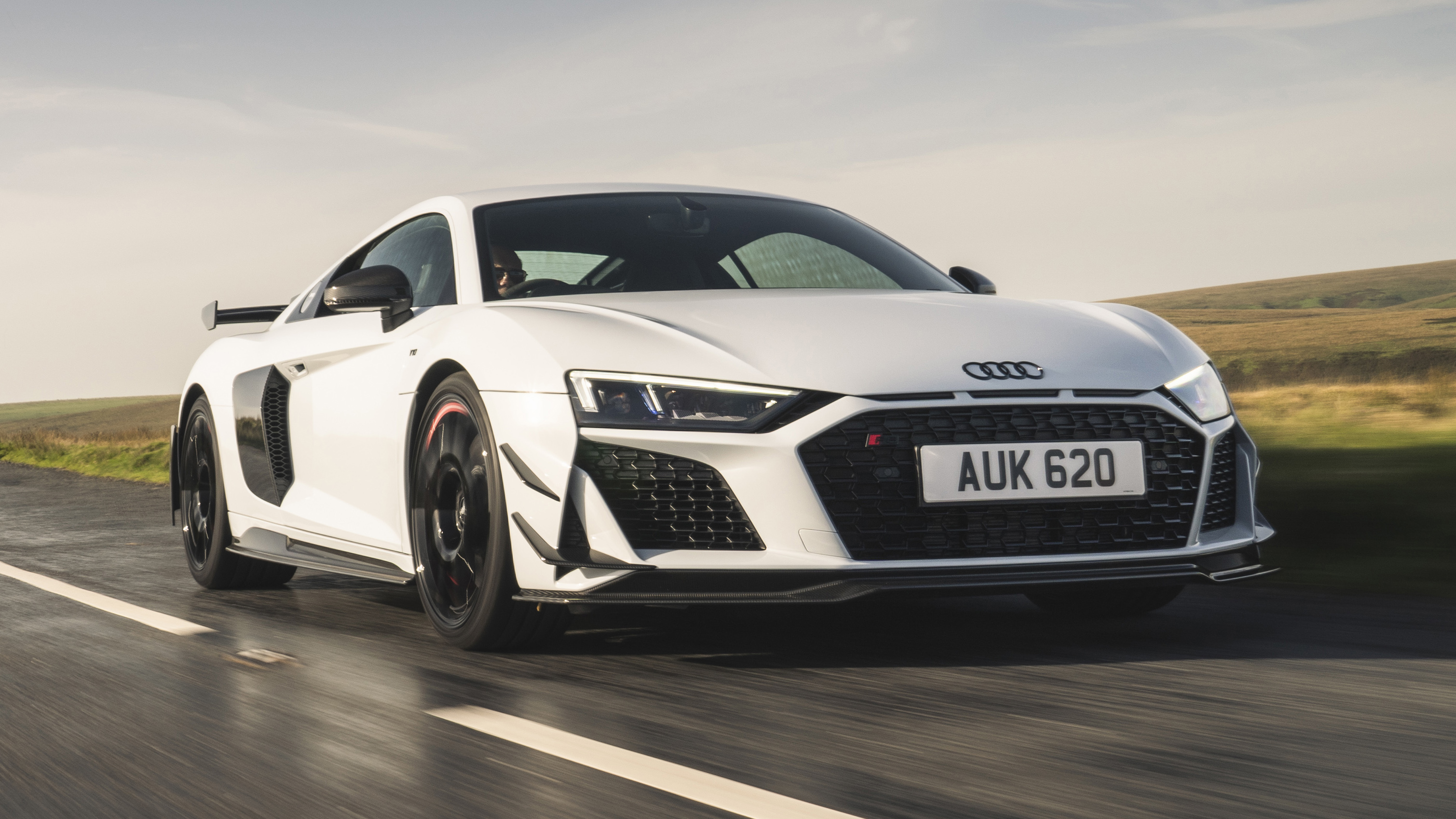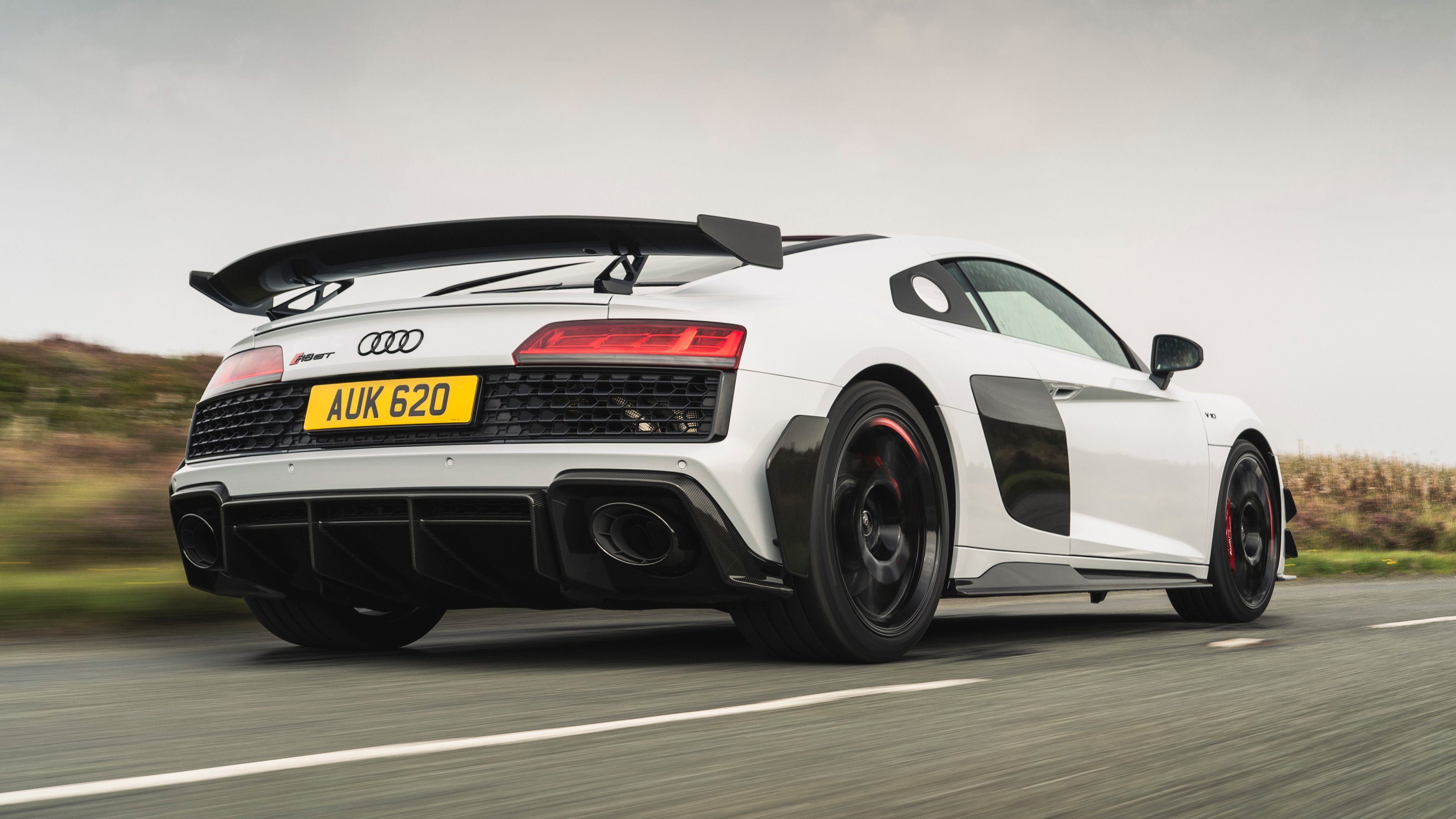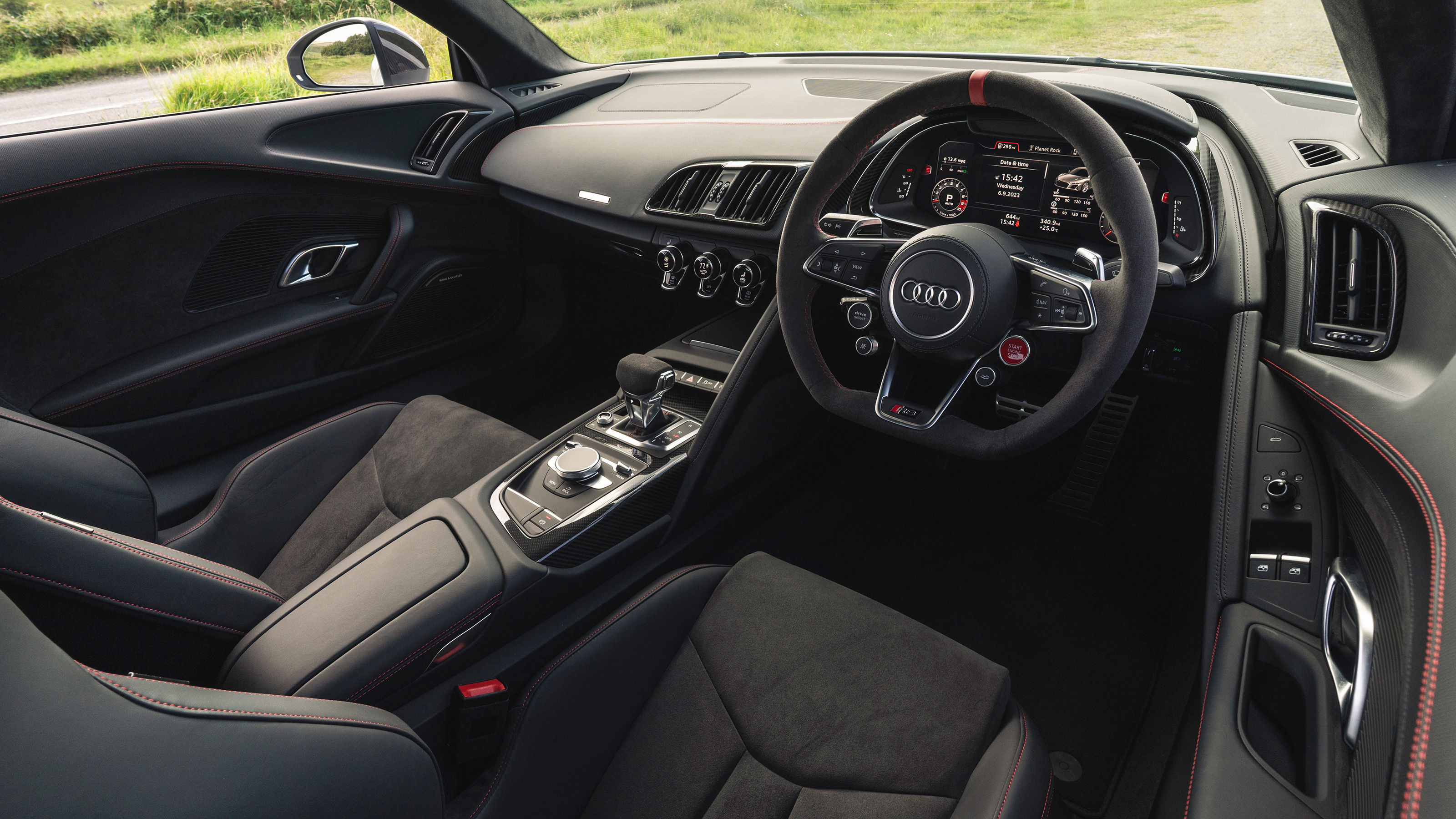
Audi R8 review
Driving
What is it like to drive?
It’s the R8’s duality that sets it apart from its rivals. Others – McLaren’s Artura, the Maserati MC20, Porsche 911 GT3 – are crisper, edgier and perhaps more exciting to drive. But none hits the high notes of everyday usability and trackday larks quite as completely as the Audi R8. In fact only one car, the Porsche 911 Turbo, does a better job of being a daily, and that, for all its speed and potency, doesn’t feel as special as the R8. Because make no mistake, a mid-mounted V10 is a very special thing.
But also quite a docile one. Always noisy at start up, yes, but this is a V10 of rare ability, so calm and tractable is it when just pottering, letting the engine warble to itself and the twin clutch gearbox self-select the ratios. If you want to maximise this side of its character, have the optional adaptive suspension, which really does soften off the ride around town, although it also brings in an odd porpoising over speedbumps. Personally, we enjoy the more natural feel of the standard suspension. And we’d have done without the optional Dynamic Steering too.
Audi persevered with this variable ratio system (a gear on the steering column allows the steering ratio to be changed, so you need less lock to go around corners). It used to be oddly artificial, but the last version was much more convincing. Ultimately all it’s doing is saving a bit of armwork, and still robbing a bit of feel from what is otherwise a very good set-up. It’s another box we’d have left unticked.
The full-fat 612bhp quattro uses a centre diff that’s electronically controlled, ensuring it’s a rear-drive car for agility unless it needs a dose of front-drive for security. Configure all these systems into their sportiest modes and the R8 gets super-reactive. It’s not a car you slide extravagantly, but you feel the small tyre-slip angles in vivid detail.
How's the handling?
The main dynamic criticism of this second generation R8 was that it lacked a bit of bite on turn-in. The suspension adjustments at the facelift were designed to improve that and partially succeeded. The nose feels a little keener and grippier, both in terms of steering response just off centre and the car reacting as the suspension compresses. Previously there was this fractional delay and a sense that the car was understeering even before it was. Now it’s slightly keener, if still not in the same league for adjustability and sharpness as something like a McLaren 570S.
Blame the weight. Despite using a hybrid carbon-aluminium chassis, the two-seat R8 weighs 1,595kg unladen – about 200kg more than the McLaren. The R8 is very nicely balanced through and out of corners. Its preference is to understeer very slightly, but you need to think carefully about coming off the throttle if you’re running wide towards the exit – it can bite back.
That engine, though?
Yep, you can forgive so much because all the time you’re playing tunes on this awesome V10. It emits a glorious, baleful warble that grows in intensity as it hones in on the 8,700rpm cut out. Its high-rev reactions are tack-sharp, epically forceful, and sound like the opera of the Gods. It's a real point of differentiation. Do you notice the extra power? The additional titanium valvetrain components? Of course not. You’re too occupied being blown away by what a great engine this is to be that analytical.
The brakes went unchanged with the facelift – steel wave rotors on the RWD R8, carbon ceramics for the quattro, and Audi claimed a reduction in braking distance (by five metres from 124mph) due to a new compound for the Michelin Pilot Sport 4S tyres.
What about the RWD one?
If you just went about your business in the RWD at six-and-a-half tenths, you might never even notice the front wheels aren’t powered. It’s a very stable, friendly mid-engined car – it doesn’t have that Eurofighter-style ‘only the computers are keeping us straight’ flightiness of a Ferrari.
But it’s absolutely not boring. We enjoyed it best in Performance Dry mode (there are also Wet and Snow settings for brave people), because here, the stability control is backed right down, but not fully switched off.
It’ll slide so much, you’ve got to properly catch it with the steering, or the car might just spin out if you're feathering the gas. Get brutal on the (very) loud pedal and the ESC goes ‘oh, you’re just being daft’ and shuts down the slide. So, it rewards delicacy and ambition, but won’t allow the talentless to crash. If you’re into your Top Trumps though, worth noting that the slightly less powerful RWD can only sprint to 62mph in 3.7 seconds, while the quattro claims 3.1.
Is the GT the best driving R8 there's ever been?
It’s a bit of a mixed bag, if we’re honest. The R8 is at its best as an everyday supercar; admittedly not as spacious and versatile as a 911 Turbo, but the cabin and engine are more special. It’s a supercar without the frustrations and histrionics. The GT dials that back for a racier vibe… which would be fine if Audi had seen it through properly. However, the key elements (sports seats, adjustable coilover suspension and non-speed sensitive steering) are all on the options list. The car we drove had the seats and regular steering (both good things), but not the adjustable suspension with its 10mm drop.
Even so, the suspension is more communicative than the steering. You get feedback from the road surface, but you're never quite sure precisely where you are with the steering, so you don’t have complete confidence in the front end. The uprated suspension is only likely to amplify that difference. As a driver’s car it’s less sure of itself than a Porsche 911 GT3.
Featured

Trending this week
- Car Review
BMW iX3






